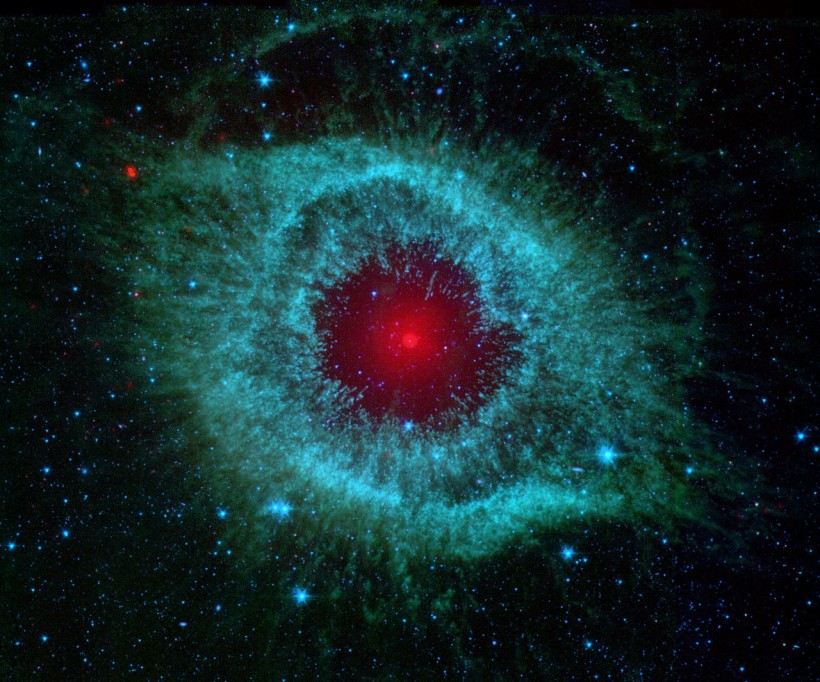The cosmos is filled with different nebulae. According to NASA Spaceplace, a nebula is a huge gas and dust cloud in space. There are nebulae that originate from dust and gas that were expelled by a dying star's explosion, like supernovas.
Live Science adds that these huge clouds fill the gaps that lie between stars. For a long time, they have been artistic subjects for their unique glow and beauty. Here are some of the cosmos' most stunning nebulae.
Helix Nebula
This space zombie has its eye 👁 on you!
— NASA Ames (@NASAAmes) October 31, 2021
The Helix Nebula is the spooky remains of a dying star, and will be "watching" from hundreds of light-years away as you trick-or-treat tonight.
Have a safe and #HappyHalloween! pic.twitter.com/zU9TA9rLMY
The Helix Nebula is situated within the Aquarius constellation. The Hubblesite notes that this specific nebula is planetary and has a tube shape.
It is a crowd favorite among amateur astronomers due to its strong and vibrant colors. Moreover, its unique resemblance to an eye has earned it the nickname "God's Eye."
Horsehead Nebula
The Horsehead Nebula seen in infrared light by the Hubble Space Telescope.
— Wonder of Science (@wonderofscience) February 2, 2022
Credit: NASA/ESA/Hubble Heritage Team pic.twitter.com/WVCCkyuTiq
Seated in the Orion constellation, the Horsehead Nebula is one of the most photographed and recognized nebulae in the sky.
In the specific photo, the nebula looks translucent due to how the shot was snapped using infrared. In actual visual wavelengths, the nebula is actually red and dark.
ALSO READ: Constellation Orion on Fire! New Image Shows Bright Flame Nebula [LOOK]
Twin Jet Nebula
Cosmic Butterfly: Shimmering colors show the complexity of the Twin Jet Nebula: http://t.co/fYuzsWPFqV @NASA_Hubble pic.twitter.com/fc5qvOyn9z
— NASA (@NASA) August 30, 2015
According to the ESA Hubble, the Twin Jet Nebula serves as a striking illustration of a "bipolar planetary nebula," which results when the central object is a binary system and not just one star. Its binary system appears to grant it iridescent-looking wings.
This nebula has also been dubbed Minkowski's Butterfly, which comes after Hermann Minkowski, who was the one behind the nebula's discovery.
Cat's Eye Nebula
For #InternationalCatDay, here's the Cat’s Eye Nebula, which appears to stare across space: https://t.co/apyEulqzV8 pic.twitter.com/PmS5ev5YNP
— NASA (@NASA) August 8, 2016
The Cat's Eye Nebula consists of 11 gas rings. Because of this, it is known to have one of the most complex nebula structures. This nebula is also one of the earliest planetary nebulas that were ever found.
Eagle Nebula
We see @NASAHubble’s beautiful images of nebulae, but what is a nebula?
— NASA Goddard (@NASAGoddard) March 6, 2022
A nebula is a giant cloud of dust and gas in space! This iconic image, named Pillars of Creation, shows towers of cosmic dust and gas that are part of an active star-forming region within the Eagle nebula! pic.twitter.com/vYWVwBU5q3
The Eagle Nebula has distinct fingerlike extensions that are commonly referred to as the Pillars of Creation. Also known as Messier 16 or M16, the Eagle Nebula was first found in 1745. It is a remarkably breath-taking sight that one can glimpse using a huge telescope.
Spider Nebula
The Spider Nebula | NASA pic.twitter.com/e9worpHbNC
— Physics-astronomy (@Physicsastronmy) April 16, 2023
The Spider Nebula is situated inside the Milky Way Galaxy and the Auriga constellation. It is known to be an active star formation hub that has green tendrils, NASA notes.
Carina Nebula
Cosmic cliffs & a sea of stars. @NASAWebb reveals baby stars in the Carina Nebula, where ultraviolet radiation and stellar winds shape colossal walls of dust and gas. https://t.co/63zxpNDi4I #UnfoldTheUniverse pic.twitter.com/dXCokBAYGQ
— NASA (@NASA) July 12, 2022
The Carina Nebula is among the biggest star formation regions that NASA can observe. It houses at least 12 stars that have a mass that is equivalent to 50 to 100 suns. Among these stars is Eta Carinae, which is one of the known brightest stars in the universe.
The Hubblesite notes that the Carina Nebula is situated around 7,500 light years away in the Carina the Keel southern constellation.
RELATED ARTICLE: Amazing Captures From the James Webb Space Telescope, Including the "Pillars of Creation" and "Phantom Galaxy"
Check out more news and information on Space in Science Times.















